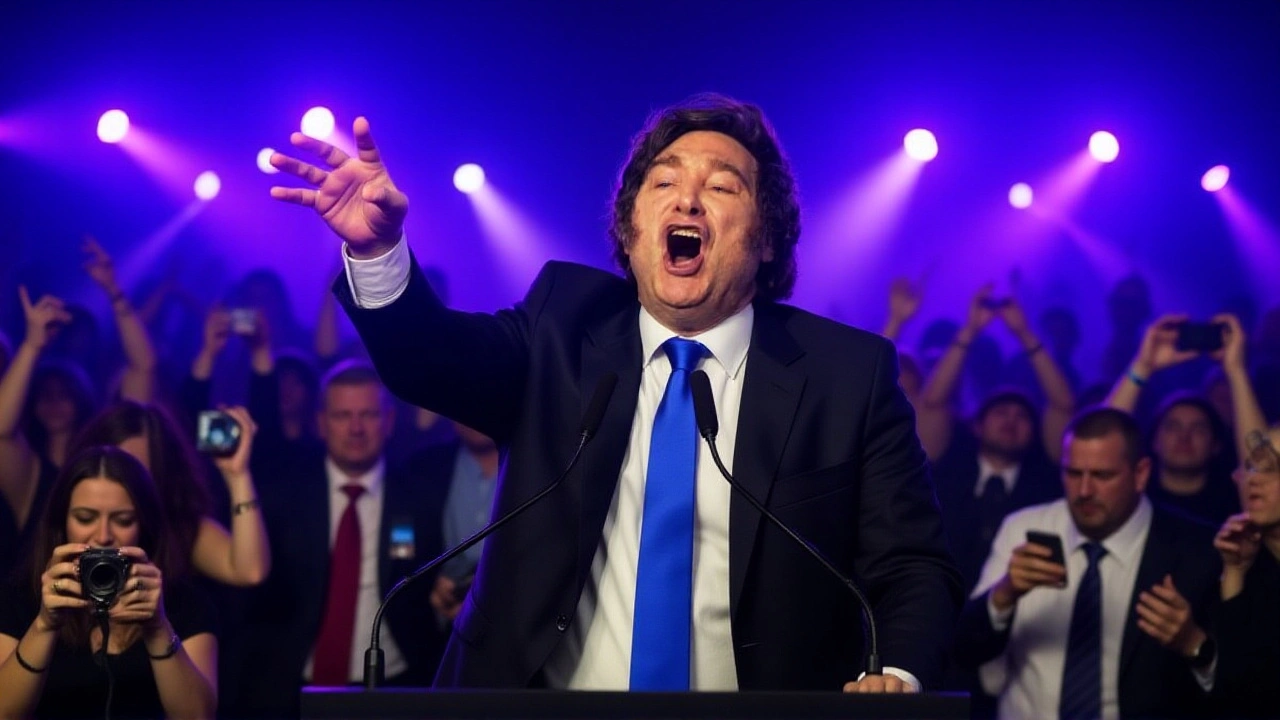When Javier Milei won Argentina’s presidency in November 2023, few believed he’d survive his first year — let alone dominate midterm elections two years later. But on the October 26, 2025, Argentine midterm electionsArgentina, his Libertarios party didn’t just survive — it conquered. For the first time in its history, Milei’s libertarian movement seized control of key districts in Buenos Aires province, home to 40% of Argentina’s 46 million people. The results weren’t just symbolic. They were a seismic shift in power, clearing the path for a radical economic overhaul backed by Donald Trump and billions in U.S. support.
What the results actually mean
Libertarios didn’t just win — they dismantled Peronist strongholds. In La Plata and Mar del Plata, once bastions of the ruling party, voters handed Milei’s coalition outright majorities. This wasn’t a squeaker. It was a landslide in a country where compulsory voting ensures turnout reflects real sentiment. The win came exactly two years after Milei’s narrow 11-point victory over Sergio Massa, a result many thought was a protest vote, not a mandate. Now, it’s clear: Argentines aren’t just tired of inflation — they’re desperate enough to gamble on radical change.
The market reacted instantly. On October 27, the Argentine peso jumped 3.2% against the dollar. Sovereign bonds surged 5.7%. Why? Because investors now believe Milei can actually deliver on his promise to dollarize the economy. He’s already slashed 150,000 public sector jobs and issued 287 decrees to gut ministries. But the real signal came from Washington.
Trump’s backing — and the $5 billion lifeline
Within hours of the results, Donald Trump declared the outcome a "big win" for his ally. Though the exact quote wasn’t released, Sky News confirmed the sentiment. The backing isn’t just rhetorical. The Trump administration has committed $3.2 billion in IMF loan guarantees and $1.8 billion in direct investment from U.S. energy giants Chevron Corporation and ExxonMobil. The catch? Milei must accelerate drilling in the Vaca Muerta shale formation — Argentina’s answer to the Permian Basin.
This is strategic. By tying U.S. capital to energy development, Washington isn’t just helping Argentina — it’s countering China and Russia. Milei’s foreign minister, Diana Mondino, already paused Argentina’s BRICS accession in 2023. Now, with U.S. money flowing, the alignment is clear: Buenos Aires is pivoting west.
The road ahead — and the constitutional trap
Legislative reforms begin November 1, 2025, targeting state-owned enterprises and public spending. Milei’s team plans to privatize everything from railways to public utilities. But the real question looms: Can he stay in power beyond 2027? Argentina’s constitution bans consecutive presidential terms. Milei called that rule "archaic" during his 2023 campaign. Now, with a supermajority in the legislature, he has the votes to push for an amendment. Experts say he’s already laying the groundwork.
"He’s not just governing — he’s institutionalizing his revolution," said Dr. Carlos Rodríguez of the Universidad de Buenos Aires on October 27. "The numbers show inflation may drop below 100% by next spring. But 40% of Argentines still live in poverty. That’s the ticking clock. If the economy doesn’t deliver real wages soon, the applause turns to anger."

Why this matters beyond Argentina
This isn’t just about one country. It’s the latest sign of a global ideological shift. From Brazil to Chile, voters are turning away from traditional left-right divides toward populist, market-driven alternatives. Milei’s success proves that even in a region historically wary of U.S. influence, economic desperation can override ideology. The Trump administration, meanwhile, has found a willing partner in Latin America — one that can deliver energy, counter Beijing, and stabilize a collapsing economy.
On November 15, 2025, Milei will fly to Mar-a-Lago in Palm Beach, Florida to finalize the deal. The meeting isn’t just a photo op. It’s a handshake that could reshape Argentina’s future — and redefine U.S. influence in South America.
Frequently Asked Questions
How did Milei win Buenos Aires province when Peronists dominated it for decades?
Milei’s campaign focused on economic desperation — inflation hit 211% in September 2025, and 40% of Argentines live below the poverty line. His message of radical deregulation and dollarization resonated with young voters and small business owners who blamed Peronist mismanagement. In districts like La Plata and Mar del Plata, turnout spiked among first-time voters who saw Milei as the only viable alternative.
What’s the real value of the U.S. financial package?
The $5 billion total includes $3.2 billion in IMF guarantees — which unlock additional multilateral funding — and $1.8 billion in direct commitments from Chevron and ExxonMobil. But it’s conditional: Milei must approve new drilling permits in Vaca Muerta by December 2025. The money isn’t a gift; it’s an investment in energy independence from Russia and China.
Could Milei change Argentina’s constitution to run again in 2027?
Yes — and he’s likely to try. With Libertarios controlling key legislative districts, he has enough votes to initiate a constitutional amendment. His party already controls 58% of the Chamber of Deputies. The process requires two-thirds approval in two consecutive sessions — possible, but politically risky. If inflation doesn’t drop sharply by mid-2026, public support could erode.
Why did Trump get involved in Argentina’s elections?
Trump sees Milei as a ideological ally who opposes socialism and embraces free markets. More practically, Vaca Muerta could supply 1.2 million barrels of oil per day by 2030 — rivaling Canada’s output. By backing Milei, Washington gains a reliable energy partner in Latin America, weakening China’s Belt and Road influence and reducing U.S. dependence on Middle Eastern oil.
What happens if the peso doesn’t stabilize?
If inflation remains above 150% into 2026, Milei’s plan could collapse. Dollarization requires massive foreign reserves — which Argentina doesn’t have. Without deeper reforms or additional U.S. support, the peso could plunge again, triggering capital flight. The $5 billion package is a bridge — not a cure. The real test begins in early 2026, when Argentines start seeing if their salaries actually buy more.
How does this affect ordinary Argentines right now?
For now, the impact is mixed. Public sector layoffs have hit families hard, but small businesses are seeing new customers as inflation eases. The peso’s rise means imported goods like medicine and electronics are cheaper. But without wage growth, many still can’t afford basics. The real change will come if Milei’s reforms create jobs — not just cut spending.
